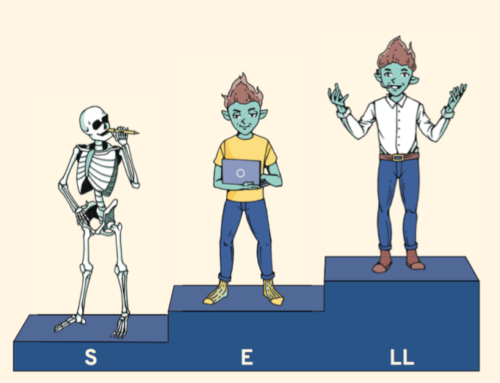Humour
in science presentations
Tom Antion is a public speaking expert and the author of ‘Wake’Em Up!’, a book in which he delves into the use of humour in business presentations. Can humour play a part in the way information is transmitted to the public in the context of science outreach? Can some types of humour be used during serious talks without backfiring on the speaker? Tom Antion gives us his take on this topic.

Why use humour in a presentation?
Humour is a way to spark the audience’s interest and keep them awake. It is one of the spikes needed in a presentation to make people pay more attention. Humour is what we call an attention-gaining device.
When I lived in Washington D.C., I did a study on a magazine called the Washingtonian. At the back, there were personal ads for people trying to find a mate. 70% of those ads said they wanted someone with a sense of humour. Ultimately people like and want to be surrounded by others who have a sense of humour. It brings people down to the same level, especially when using self-depricating humour. Trying to be perfect creates a gap with the average person. If you can make fun of your flaws people will love you, gravitate towards you and be more willing to listen to what you have to say.
How much humour should be included in a serious talk?
I would say anywhere from 15% to 20% maximum but it has to be spread out throughout the presentation and not incorporated all at once. I also encourage speakers to push the limits while gauging the reactions from the audience. If people come shake your hand, want to talk at the end and don’t say ‘Oh, I am glad that’s over!’, then you can probably include a a higher percentage of humour than you normally do.
Where should you place humour in a presentation?
Audiences have cycles of attention and so variable concentration spans. At the beginning of a speech, the excitement is high and if the speaker tells a bad joke, it can disappoint!
To maintain their attention, I advise using attention-gaining techniques. It can be humour but also PowerPoint slides, moving around the stage or changes in tone of voice. For a middle-aged audience, these techniques could be used every couple of minutes. But the younger an audience is, the lower their attention span will be so you will then need to use attention-gaining techniques more regularly.
However, I advise not to start a presentation with humour unless all they want from you is entertainment! That’s the mistake people make. They start out with a not-so-funny joke and it all goes downhill from there. Then the rest of the talk becomes an uphill slog comparable to climbing Mount Everest in flip-flops!
I always start out serious and then warm the audience up to the humour. I usually start speeches saying ‘listen, I am here, I am not going to waste your time, let’s get to it! I have some great tips for you!’. The audience members know they are not wasting their time. They are already with me so there is very little chance of me failing.
Have you noticed some specific features related to the use of humour in scientific talks?
A lot of scientists feel they will lose their credibility if they are too fun. Obviously, there can be issues if the speaker acts like a stand-up comedian. But as long as they get their message across, they can allow a bit of humour. It makes them more interesting and, on the contrary, gain in credibility.
Also, many scientists and PHDs are afraid of what their colleagues are going to think. So they do everything to make sure not to disappoint them and forget the people they are supposed to be thinking about: the audience. I advise them to go into their own bubble and try not to be influenced by their peers.
Using humour can be risky. How do you suggest reacting when a joke is not perceived as funny?
Humour should only be used to make a point. The goal is not to be laugh-out-loud funny, but rather to make the presentation fun. As long as the point is made, it is not always necessary to wait for a reaction from the audience or to stop talking.
For instance: ‘Did you ever hear of the topic of stress management? I was reading the other day that there are so many stress management programs out there, people are getting stressed out trying to pick one!’ If the audience laughs, the speaker should stop talking otherwise they might end the laughter. That’s what comedians call ‘stepping on your laughter’. They should wait for the audience to finish laughing before continuing the presentation. If the audience doesn’t laugh, the speaker should keep talking as if no reaction were expected.
> Public speaking
22/09/2016








